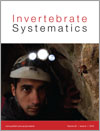High-mountain regions are known to harbour considerable biodiversity, although it is not all well known. The terrestrial fauna of the world’s largest mountain range, the Himalayas, has been moderately well studied, but this is not the case with the limnic fauna, and especially molluscs. During intensive malacozoological field surveys conducted over the past 20 years, the bivalve family Sphaeriidae has been studied in Nepal along an elevational gradient from 100 to 4010 m above sea level (a.s.l.). Here we describe a new species of Sphaeriidae, Pisidium alexeii, sp. nov., based on comprehensive molecular phylogenetics, anatomy and shell morphology. The species can be clearly distinguished from all other sphaeriid species occurring in Nepal. A molecular phylogeny based on mitochondrial and nuclear data inferred the oriental biogeographical affinity of the new species. The species is ecologically restricted and only occurs at a few sites between 1010 and 1700 m a.s.l. A review and updated checklist of the sphaeriid fauna of Nepal is provided and biodiversity and biogeographical patterns are discussed.
How to translate text using browser tools
13 December 2016
Exploring high-mountain limnic faunas: discovery of a novel endemic bivalve species (Sphaeriidae : Pisidium) in the Nepal Himalayas
Ulrich Bößneck,
Catharina Clewing,
Christian Albrecht
ACCESS THE FULL ARTICLE

Invertebrate Systematics
Vol. 30 • No. 6
December 2016
Vol. 30 • No. 6
December 2016




